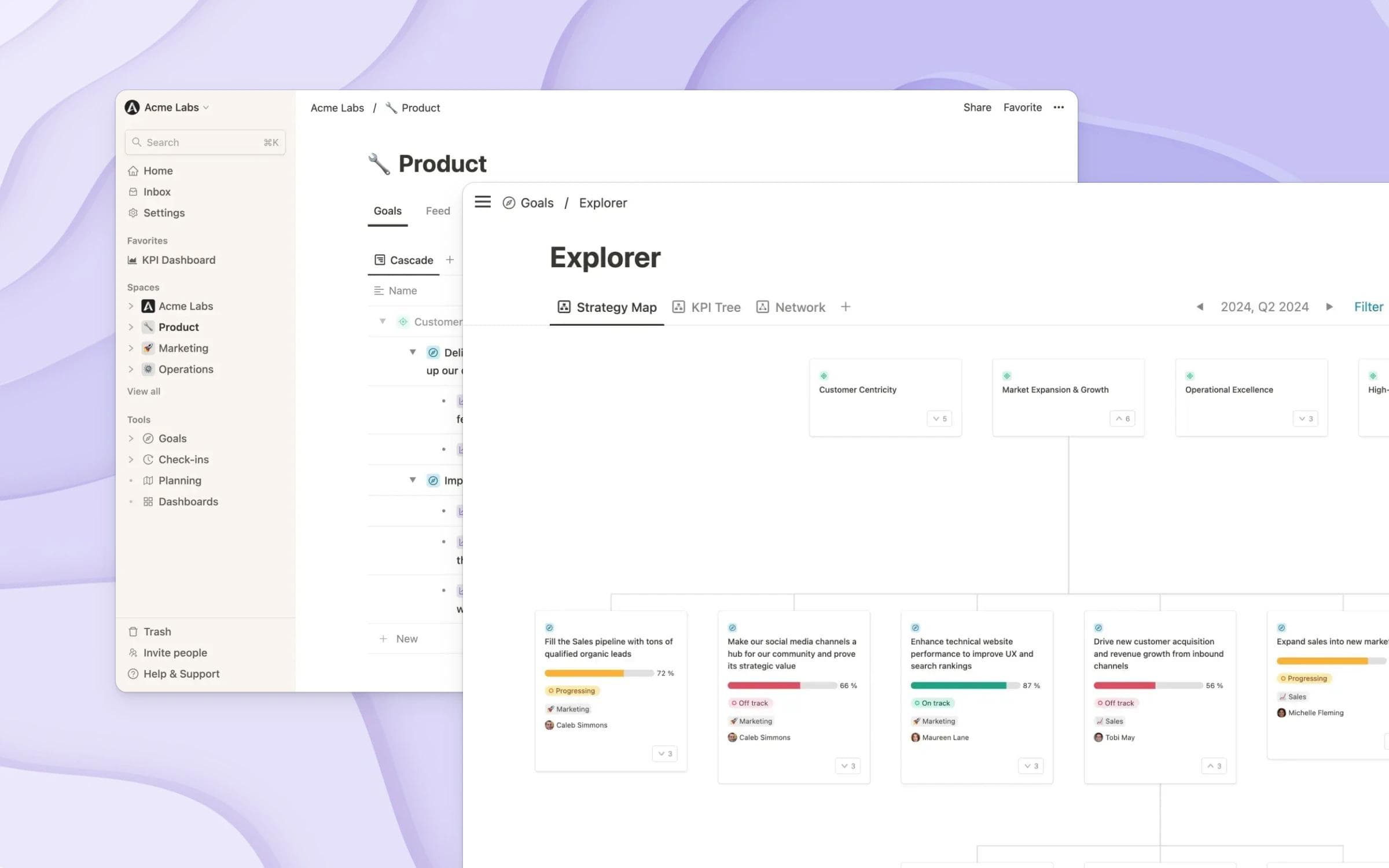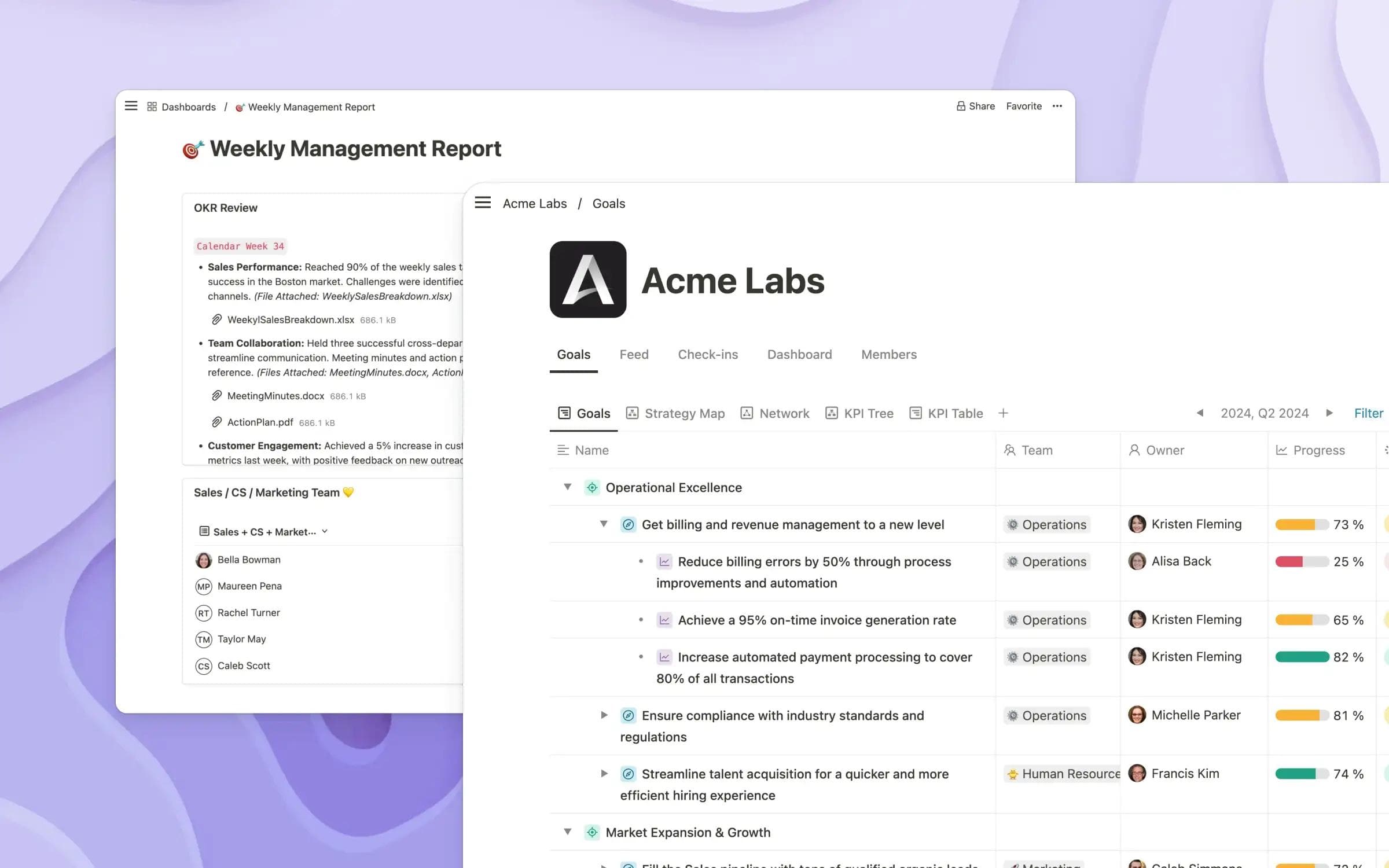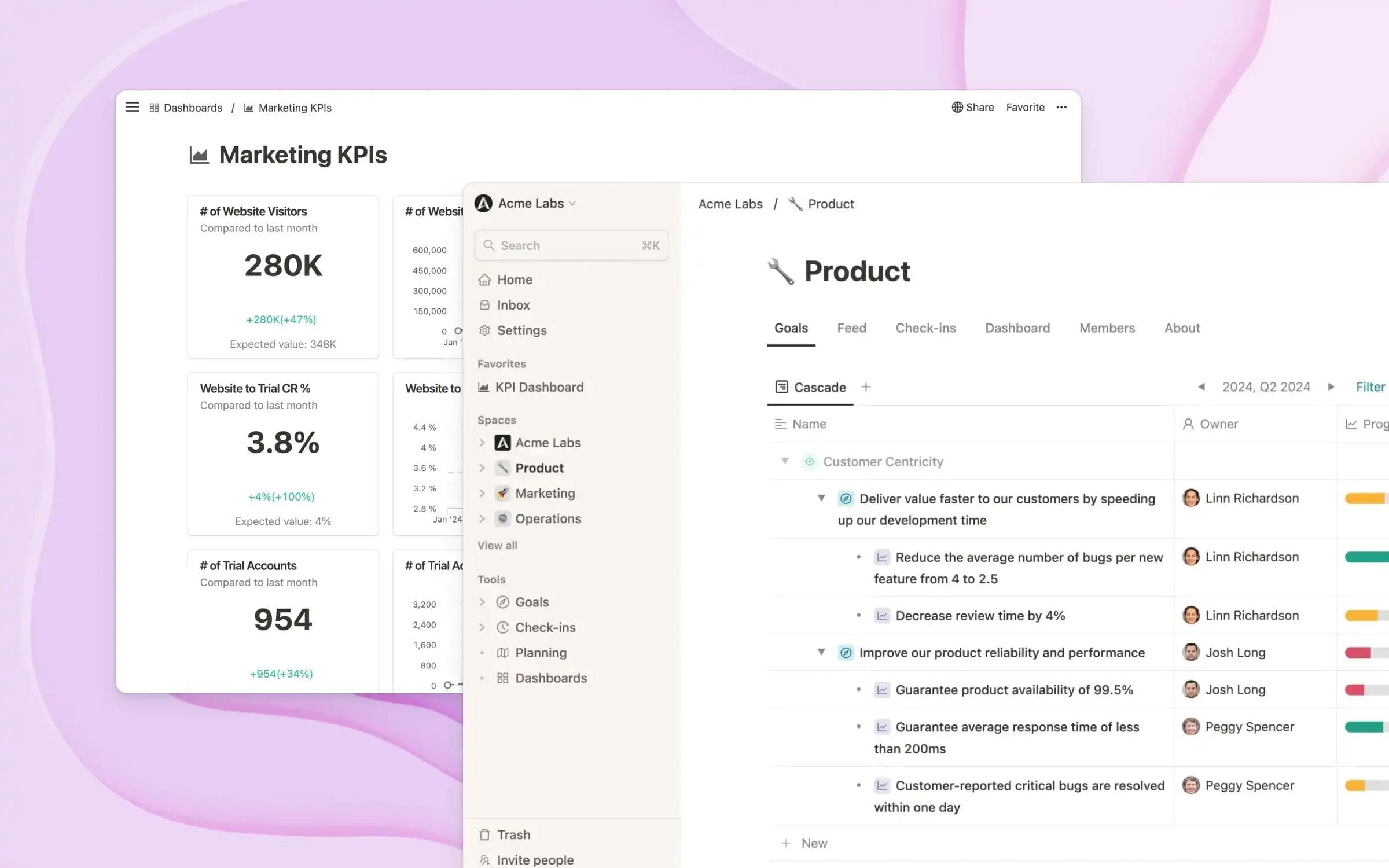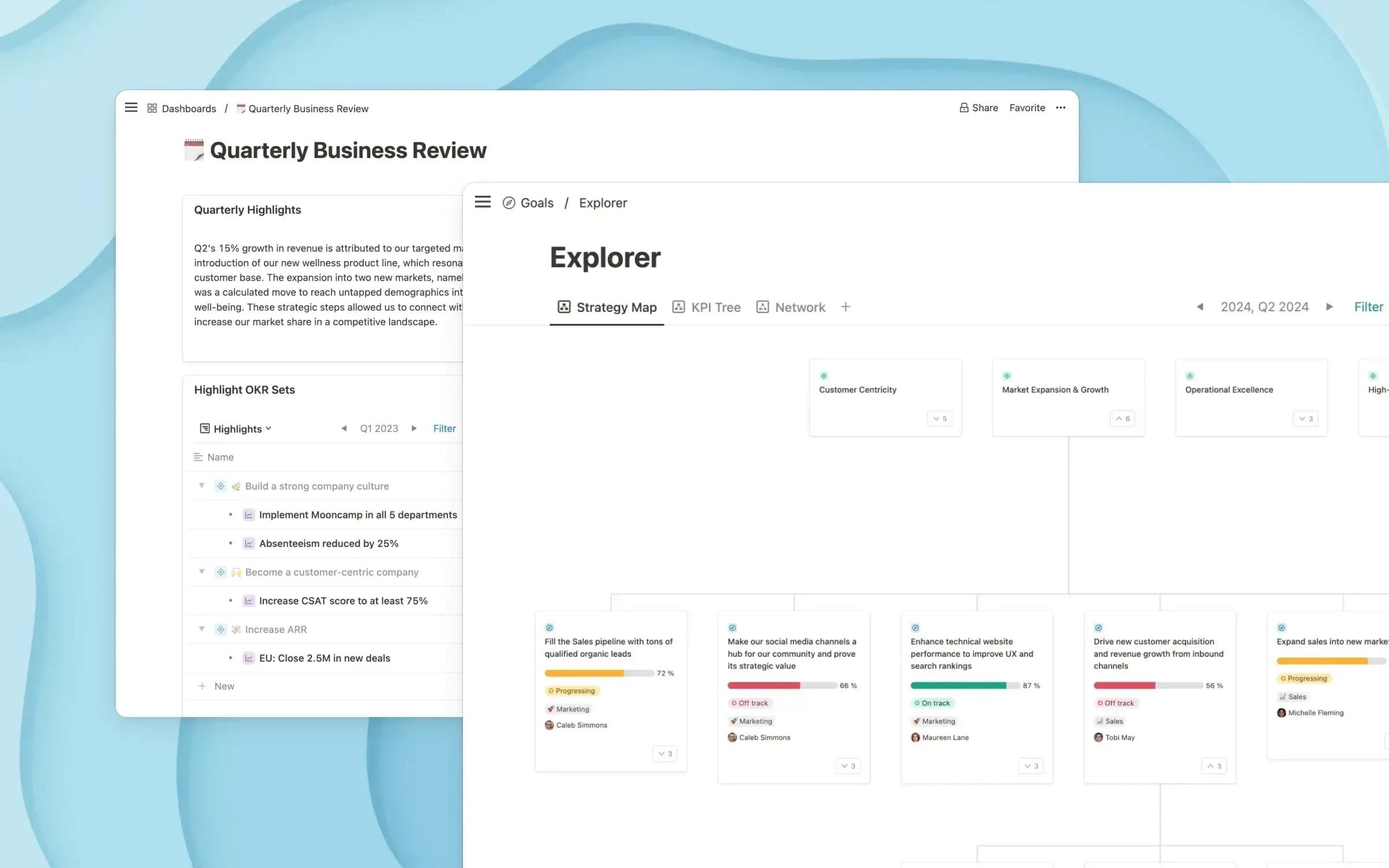Tability.io is known for being a beginner-friendly goal-tracking platform, focused on providing a lightweight alternative to traditional OKR tools. This makes it a popular choice for small teams and startups that need a simple, no-fuss platform to stay on top of goals and metrics. However, as companies scale or face more complex strategic goals they might outgrow the platform’s limited functionality.
If your team is in search of a more feature-rich or scalable solution, you may want to explore these 10 alternatives, each offering distinct advantages to suit a variety of organizational needs.
Research method: To determine the best software available, we combined data from reputable comparison sites like G2 and Capterra, including reviews, feature ratings, service evaluations, awards, overall satisfaction, popularity, and willingness to recommend. Additionally, each tool was assessed based on criteria such as ease of use, customizability, breadth and depth of features, data security, customer support, and pricing.
Why look for a Tability.io alternative?
Although Tability.io can work well for smaller teams that only require basic goal management, it often falls short for growing organizations or teams with more intricate workflows. Some common pain points that lead teams to seek alternatives include:
- Minimal customization options: Some users have noted that Tability.io offers limited customization, especially when compared to more robust platforms. This can be an issue for teams that need to tailor goal cycles, reporting formats, or performance metrics to fit their specific needs.
- Basic performance tracking: The platform focuses on simple goal tracking but lacks deeper performance management or data analytics features.
- Limited features: Tability.io keeps things simple, making it a great option for small teams. But, this focus on simplicity comes at a cost—it lacks key features that larger organizations with more complex workflows often require.
- Basic user interface (UI): While Tability.io's UI is functional, users have noted that it lacks the polish and intuitive design of other platforms. This can make the platform less engaging and harder to navigate, particularly for new users or larger teams that require more user-friendly and visually appealing tools.
Not thrilled with these limitations? It might be time to explore alternative platforms that offer greater flexibility, enhanced features, and scalability tailored to the growing needs of your team.
Top 10 Tability.io alternatives
Scroll through and find out why these tools are good alternatives and which one might be the perfect match for your organization.
1. Mooncamp
Best overall Tability.io alternative.
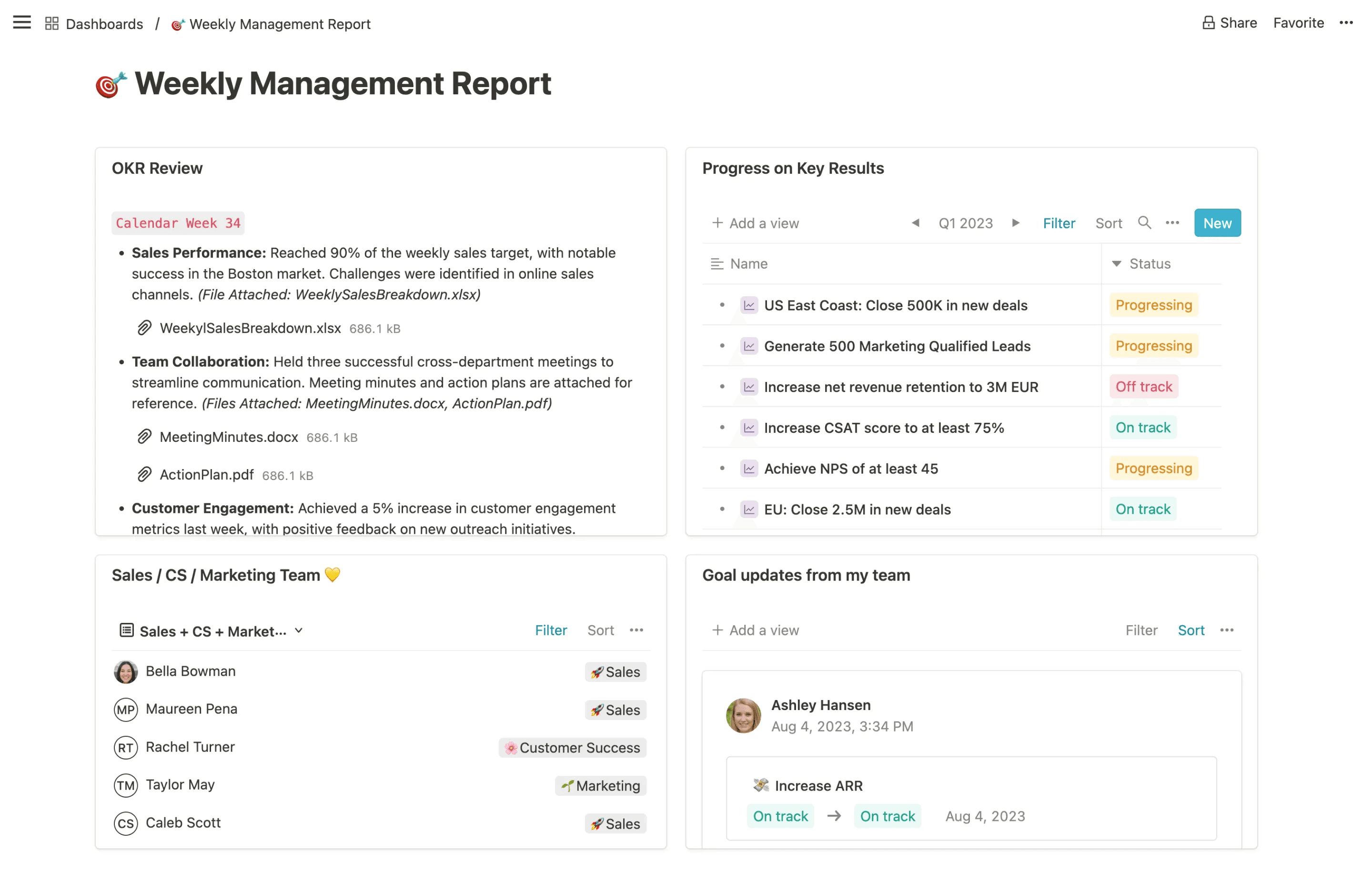
Mooncamp is one of the most flexible OKR management platforms available, designed to adapt to teams’ specific workflows and needs. Whether your organization is new to OKRs or looking to refine its strategy execution, Mooncamp’s built-in customizability and expert guidance make it an excellent choice for organizations seeking a more dynamic and tailored approach.
Plus, Mooncamp’s team of OKR experts offers ongoing support to ensure seamless adoption, helping your team get the most out of the platform from day one.
Standout features
Mooncamp is ideal for teams that require customization and hands-on guidance. Here's why it stands out:
- Advanced reporting and analytics: Mooncamp provides in-depth reporting features with its intuitive dashboards. These dashboards offer clear insights into how goals are progressing, enabling teams to spot issues early, adjust strategies in real time, and make decisions based on data.
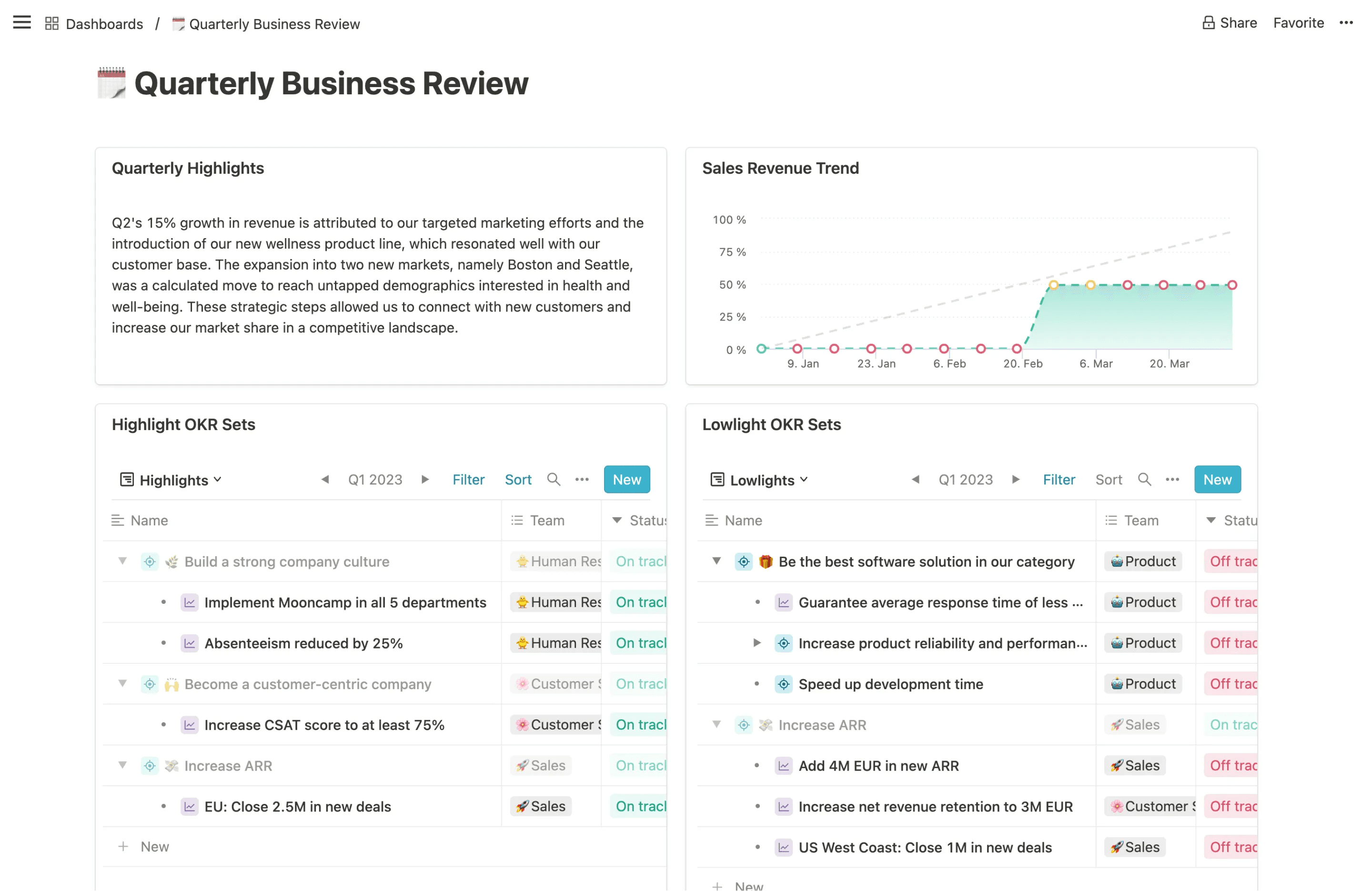
- Intuitive UI: Mooncamp’s user interface is not only visually appealing but also designed for easy navigation. The clean, colorful layout helps reduce the learning curve, allowing teams to quickly adopt and make the most of the platform.
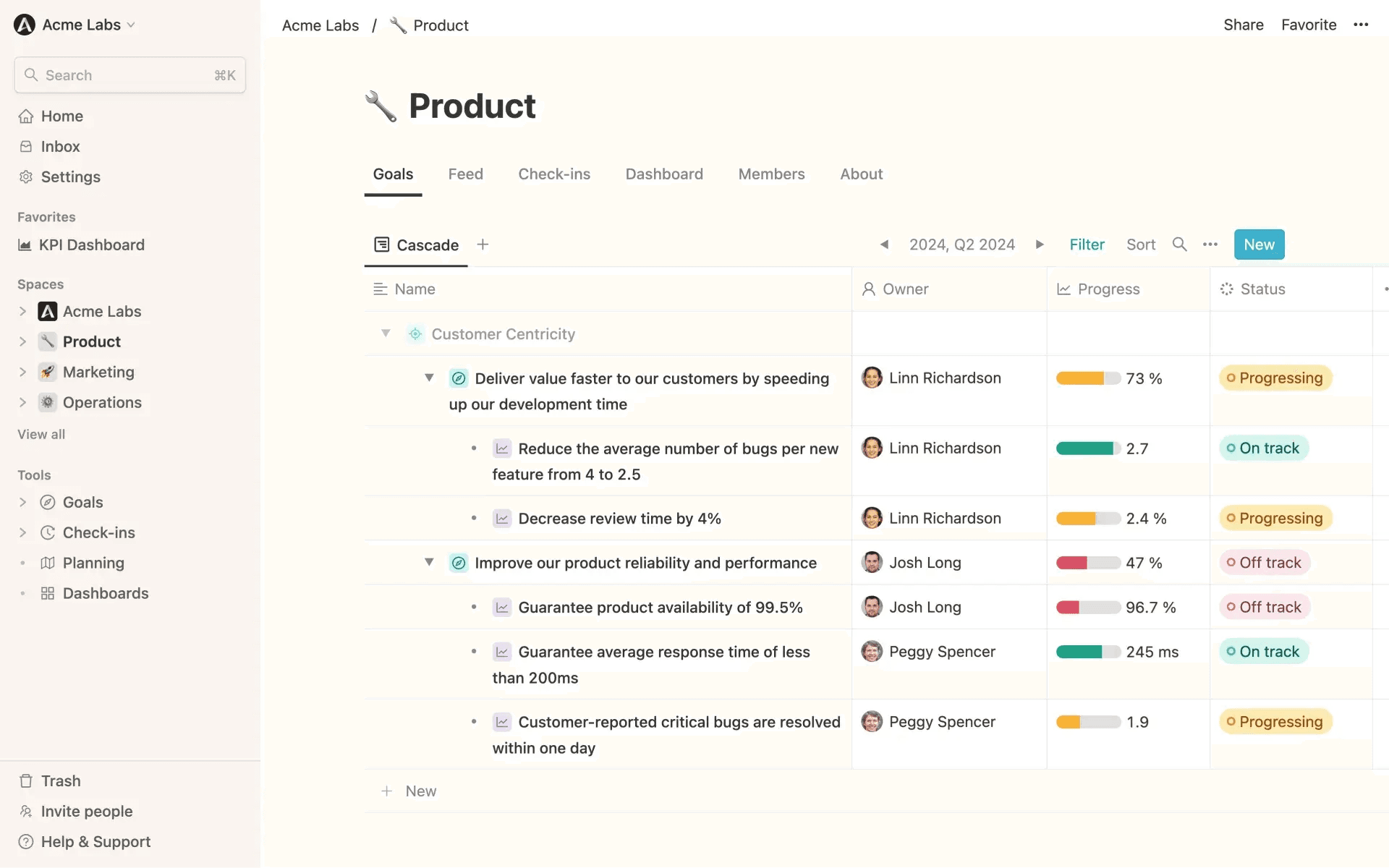
- Regular check-ins: With built-in check-ins, Mooncamp helps maintain alignment by encouraging teams to review their progress regularly. These automated reminders foster a culture of accountability, ensuring that OKRs remain a focus without overwhelming daily operations.
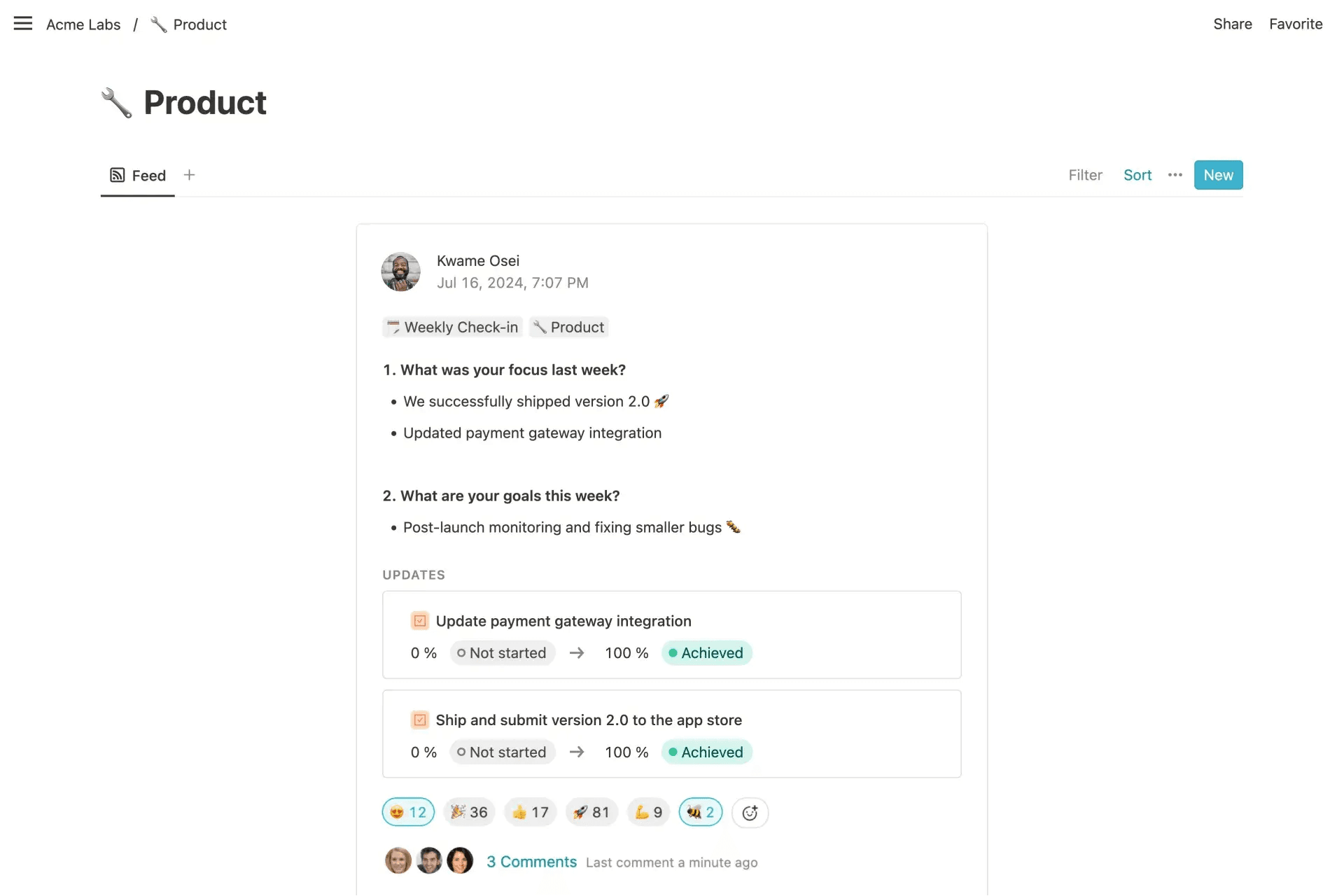
- Visual goal alignment: Mooncamp’s strategy maps and goal cascades provide a comprehensive view of how individual objectives support overarching business goals. This clarity helps maintain transparency and collective focus across the organization, making it easier to connect everyday tasks with long-term strategic outcomes.
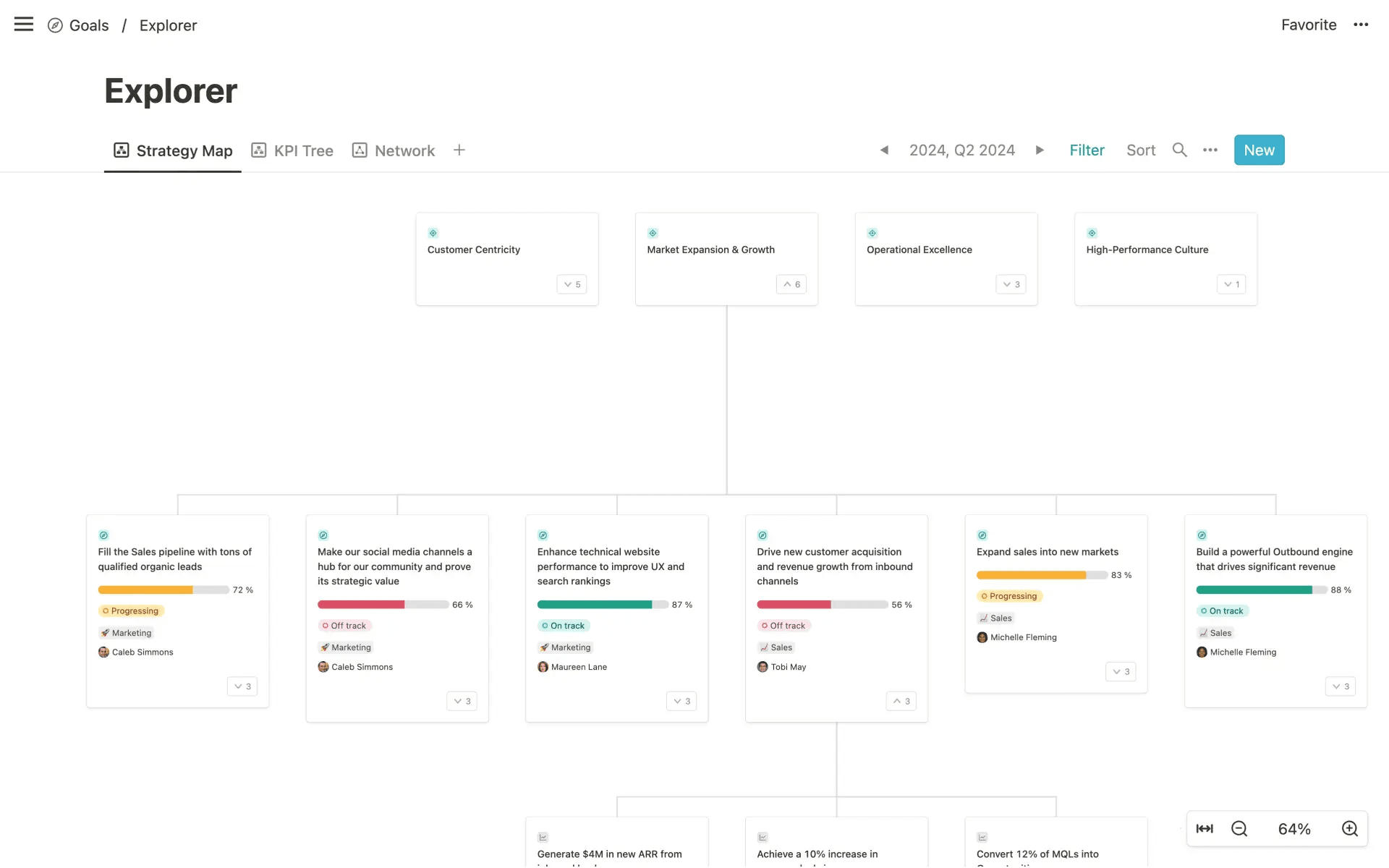
- Customizability: Mooncamp allows teams to personalize their entire goal-setting framework, supporting not only OKRs but also other methodologies like SMART goals and NCTs. Teams can customize templates, add unique metrics, and even use their internal terminology, ensuring the platform aligns perfectly with their processes.
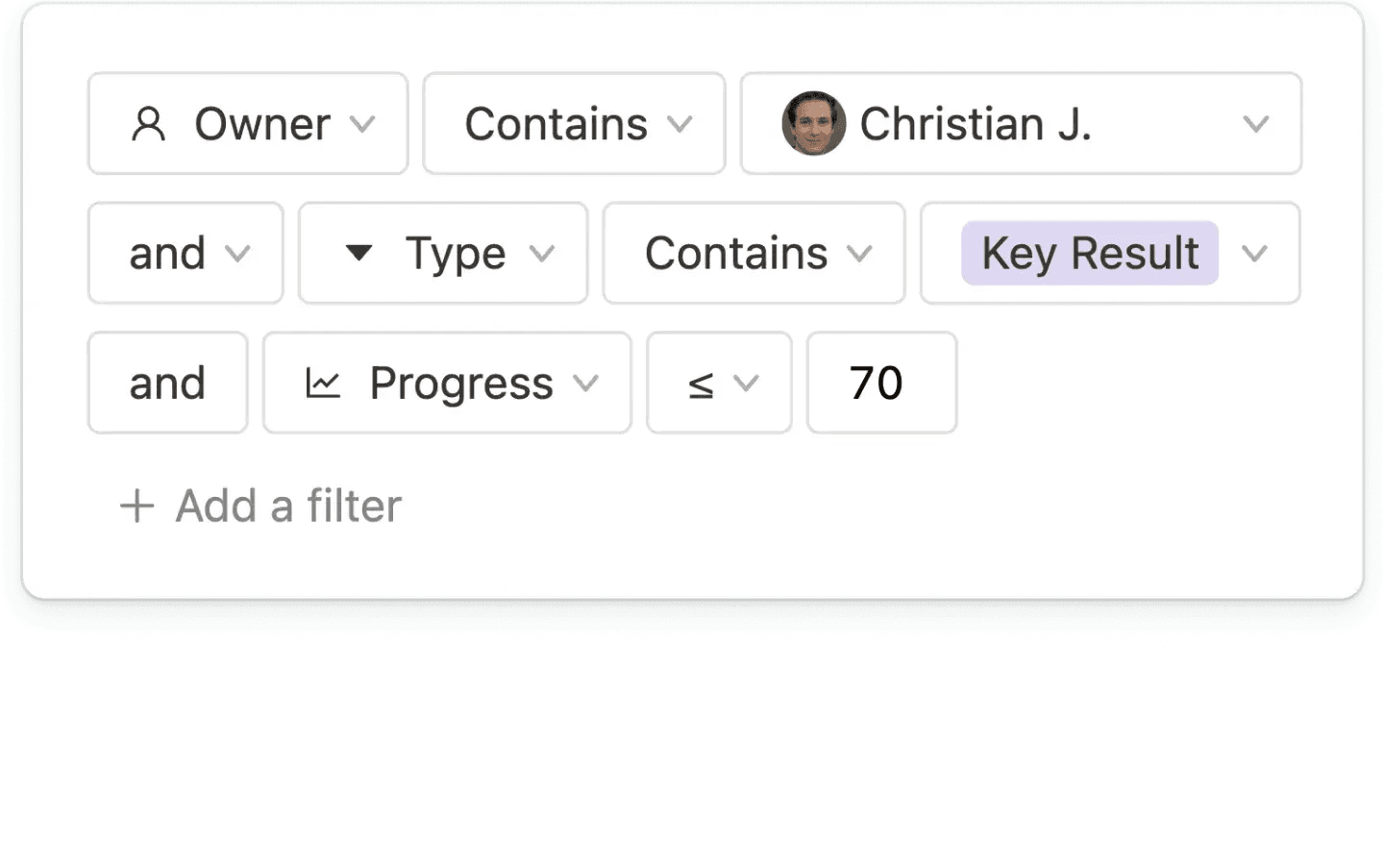
- Strong data security: Mooncamp is built with enterprise-grade security measures, including full GDPR compliance. This ensures that sensitive organizational data remains secure, offering peace of mind.
Mooncamp ratings and review
G2: 4.8/5 (based on 260+ reviews)
Capterra: 5/5 (based on 20+ reviews)
I love Mooncamp's flexibility and customization options. We can define different types of goals, including Objectives, Goals, Key Results, or anything else we like. Additionally, we can create our own fields to add any necessary information to our OKRs. The tool is easy to use and intuitive, with a great UI design.
⭐⭐⭐⭐⭐ Review on G2
Pricing
Essential plan: $6.00 per user per month
Professional plan: $10.00 per user per month
Enterprise: Custom pricing
